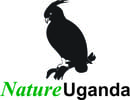The Ecological Transition of Maramagambo Grassland: A Shift from Grassland to Wetland Habitat and Its Implications on Avian Populations

The Maramagambo Grassland, located within Kakuuto Sub-County in Kyotera District – Uganda, stands as an integral part of the Sango Bay Important Bird Area. The site has diligently been monitored by NatureUganda bi-annually since 2009. The area was known for its rich avian diversity, particularly land birds, with 182 species documented since its initial survey. Originally characterized by expansive grasslands, the habitat provided a sanctuary for an abundance of grassland avifauna, including whydahs, cisticolas, and longclaws, alongside various other terrestrial species.

A comprehensive survey conducted on March 8th, 2024, underscored this shift, revealing a total of 40 avian species, including ten distinct water specialists such as the Pied Kingfisher, Long-tailed Cormorant, Purple Heron, Malachite Kingfisher, and Black Crake. Moreover, additional species observed exhibited an affinity towards water, exemplified by the Northern Brown-Throated Weaver, Yellow-Backed Weaver, and Red-Throated Sunbird.
The implications of climate change, manifesting in changed seasons and an increased frequency of rainfall, implies a future where the Maramagambo grassland site, previously dry, may change into a permanent wetland habitat, ultimately affecting the bird population in the area.
Recommendations:
- Comprehensive Research: Urgent endeavours are imperative to clarify the repercussions of these habitat transformations on other biodiversity components, like mammals, insects, and flora, thereby mitigating the risk of extinction for vulnerable species.
- Biodiversity Documentation: Extensive documentation of biodiversity elements within the region is important to safeguarding the invaluable fauna and flora of great conservation importance.
Related Posts
Recent Posts
NatureUganda hosts nature walk to promote conservation and tourism in Bugoma CFR
Site Profiling of Mabamba Bay and Musambwa Islands: Opportunities for Biodiversity Conservation and Climate Resilience
Greater Painted-snipe – When Females Take the Lead
All Categories
- Conservation and Development (35)
- Eco-tourism (6)
- Education and Awareness (14)
- Forests (12)
- Gorvenance (1)
- Habitats (13)
- membership (2)
- Nature walk (3)
- People (10)
- Projects (13)
- Public dialogue (9)
- Research and Monitoring (22)
- Sites (6)
- Species (13)
- Wetlands (15)
- Wildlife (10)




